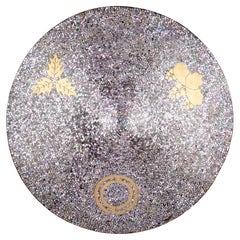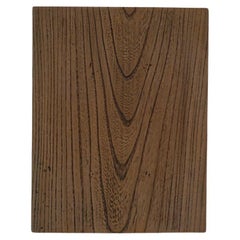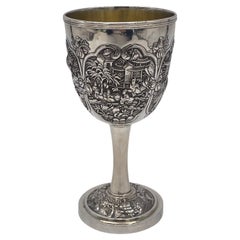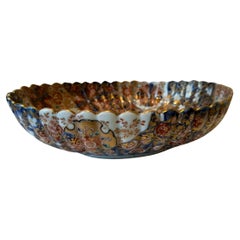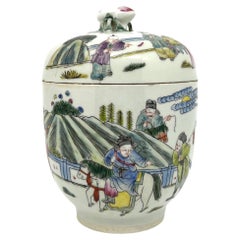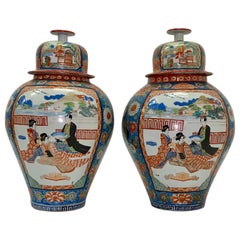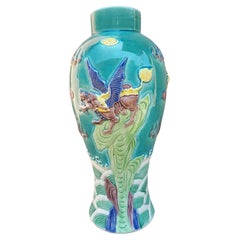1860s Asian Art and Furniture
Japanese Edo Antique 1860s Asian Art and Furniture
Wood
Japanese Meiji Antique 1860s Asian Art and Furniture
Gold
Japanese Meiji Antique 1860s Asian Art and Furniture
Wrought Iron
Chinese Qing Antique 1860s Asian Art and Furniture
Enamel
Antique 1860s Asian Art and Furniture
Ceramic
Chinese Qing Antique 1860s Asian Art and Furniture
Porcelain
Chinese Chinese Export Antique 1860s Asian Art and Furniture
Glass
Chinese Antique 1860s Asian Art and Furniture
Porcelain
Chinese Qing Antique 1860s Asian Art and Furniture
Porcelain
Antique 1860s Asian Art and Furniture
Leather, Mother-of-Pearl, Wood, Lacquer
Japanese Meiji Antique 1860s Asian Art and Furniture
Enamel
Japanese Meiji Antique 1860s Asian Art and Furniture
Porcelain
Chinese Antique 1860s Asian Art and Furniture
Porcelain
Japanese Meiji Antique 1860s Asian Art and Furniture
Softwood, Lacquer
Chinese Chinoiserie Antique 1860s Asian Art and Furniture
Wood
Burmese Other Antique 1860s Asian Art and Furniture
Bronze
Chinese Qing Antique 1860s Asian Art and Furniture
Gold
Japanese Antique 1860s Asian Art and Furniture
Ceramic, Porcelain
Japanese Antique 1860s Asian Art and Furniture
Ceramic, Porcelain
Chinese Chinese Export Antique 1860s Asian Art and Furniture
Silver
Japanese Antique 1860s Asian Art and Furniture
Porcelain
Italian Renaissance Revival Antique 1860s Asian Art and Furniture
Bronze
Chinese Chinese Export Antique 1860s Asian Art and Furniture
Porcelain, Harewood
English Gothic Antique 1860s Asian Art and Furniture
Elm
Japanese Anglo-Japanese Antique 1860s Asian Art and Furniture
Elm
Japanese Antique 1860s Asian Art and Furniture
Lacquer
Antique 1860s Asian Art and Furniture
Other
Turkish Islamic Antique 1860s Asian Art and Furniture
Copper
British Antique 1860s Asian Art and Furniture
Iron
Chinese Chinese Export Antique 1860s Asian Art and Furniture
Ceramic
Chinese High Victorian Antique 1860s Asian Art and Furniture
Oak
Chinese Antique 1860s Asian Art and Furniture
Porcelain
Chinese Chinese Export Antique 1860s Asian Art and Furniture
Hardwood
English High Victorian Antique 1860s Asian Art and Furniture
Wood
Chinese Chinese Export Antique 1860s Asian Art and Furniture
Silver
Japanese Meiji Antique 1860s Asian Art and Furniture
Gold
Japanese Edo Antique 1860s Asian Art and Furniture
Wood
Chinese Antique 1860s Asian Art and Furniture
Porcelain
Chinese Antique 1860s Asian Art and Furniture
Silk, Glass, Oak
Chinese Antique 1860s Asian Art and Furniture
Porcelain
Chinese Chinese Export Antique 1860s Asian Art and Furniture
Silver
Chinese Antique 1860s Asian Art and Furniture
Porcelain
Indonesian Other Antique 1860s Asian Art and Furniture
Ceramic
Chinese Chinese Export Antique 1860s Asian Art and Furniture
Sterling Silver
Chinese Antique 1860s Asian Art and Furniture
Porcelain
Antique 1860s Asian Art and Furniture
Earthenware
Chinese Antique 1860s Asian Art and Furniture
Porcelain
Thai Other Antique 1860s Asian Art and Furniture
Ceramic
Japanese Edo Antique 1860s Asian Art and Furniture
Coral, Gold
Chinese Chinese Chippendale Antique 1860s Asian Art and Furniture
Wood
Chinese Qing Antique 1860s Asian Art and Furniture
Bronze
Chinese Qing Antique 1860s Asian Art and Furniture
Pottery
Japanese Edo Antique 1860s Asian Art and Furniture
Silk
Central Asian Rustic Antique 1860s Asian Art and Furniture
Wool, Silk
Japanese Meiji Antique 1860s Asian Art and Furniture
Bronze
Chinese Chinese Export Antique 1860s Asian Art and Furniture
Bone, Boxwood, Teak
French Chinoiserie Antique 1860s Asian Art and Furniture
Bronze
Chinese Antique 1860s Asian Art and Furniture
Porcelain
Read More
Chicago’s Pagoda Red Has a Spirited Mix of Asian Antiques and Bold New Art
For 25 years, gallerist Betsy Nathan has leveraged her keen eye and key connections to bring a unique selection of rare finds to the market.
In L.A., Gallerist JF Chen Has Long Championed Eclectic Blue-Chip Design
Now working alongside his daughter Bianca, dealer Joel Chen has presented a most covetable array of antiques, art and contemporary creations for more than 40 years.
12 Calming Spaces Inspired by Japanese Design
From cherry-blossom-adorned walls paired with glamorous lighting to wood-paneled ceilings above checkerboard-patterned chairs, these 12 spaces seamlessly blend Eastern and Western aesthetics.
Rodrigo Rivero Lake’s Mexico City Showroom Is a Museum-Worthy Trove of Spanish Colonial and Asian Antiques
The dealer and curator has spent the past 50 years amassing a collection of exceptional art, furniture and architectural elements that trace the cultural influence of the Spanish empire from Europe to the Americas and beyond.
16 Refined Asian-Inspired Interiors
These spaces exemplify how Eastern elements elevate a home's decor.
